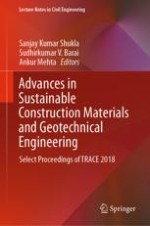2020 | OriginalPaper | Chapter
Influence of Microstructure of Geopolymer Concrete on Its Mechanical Properties—A Review
Authors : Amer Hassan, Mohammed Arif, M. Shariq
Published in: Advances in Sustainable Construction Materials and Geotechnical Engineering
Publisher: Springer Singapore
Activate our intelligent search to find suitable subject content or patents.
Select sections of text to find matching patents with Artificial Intelligence. powered by
Select sections of text to find additional relevant content using AI-assisted search. powered by
